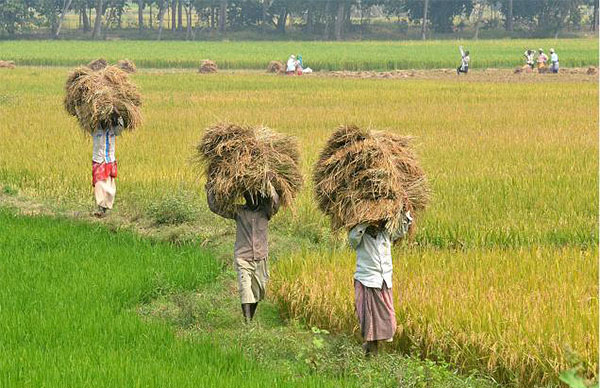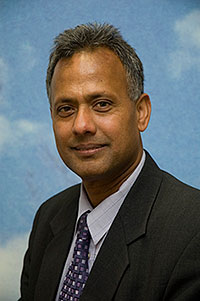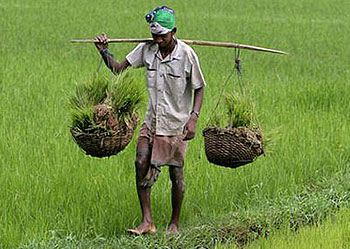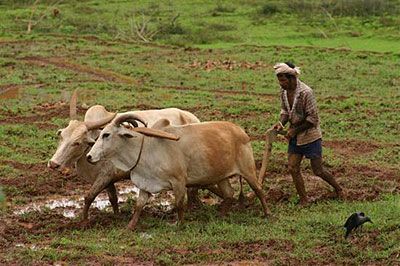India pursues modernisation at a huge cost to rural communities

Thu, 05 Feb 2015 09:34:00 GMT
“...India does not need a land grab policy to benefit the corporate sector, but a land conservation policy which conserves eco-systems and maintains biodiversity...”
 ECONOMIC reforms in India led to growth in some sectors and boosted the wealth of the rich and the educated middle classes, but agriculture – which employs 60 per cent of the labour force – has remained stagnant, both in terms of land productivity and capital investment.
ECONOMIC reforms in India led to growth in some sectors and boosted the wealth of the rich and the educated middle classes, but agriculture – which employs 60 per cent of the labour force – has remained stagnant, both in terms of land productivity and capital investment.
Meanwhile, millions of poor people have lost their homes and livelihoods because their land was grabbed by the government for development projects, and huge numbers of them have yet to be resettled. These are among the themes that emerge in new articles by an Indian-born University of Huddersfield lecturer who has become a stern critic of the economic and social policies of his homeland.
Dr Kalim Siddiqui (pictured right), a specialist in development economics, argues that investment needs to be channelled towards agriculture, rural development, education and health.
“We have got more land, but our productivity is one third of that in China because they have invested more. In India, we should raise land productivity by investing in flood control, fertilisers and irrigation networks.”
Figures show that 20 per cent of Indians do not attend school and 40 per cent of the population cannot read or write. Huge levels of malnutrition persist in rural areas, continues Dr Siddiqui. “The government should invest more in primary education, so that skill levels will increase alongside better hygiene and nutrition.”
Poverty remains entrenched
 His latest articles are Modernisation and Displacement of Rural Communities in India, in the Journal of Social Business and Contradictions in Development: Growth and Crisis in Indian Economy, in Economic and Regional Studies.
His latest articles are Modernisation and Displacement of Rural Communities in India, in the Journal of Social Business and Contradictions in Development: Growth and Crisis in Indian Economy, in Economic and Regional Studies.
The latter article analyses the impact of reforms initiated in the early 1980s that aimed to liberalise the Indian economy. These led to higher growth rates, but they have now slowed, and earlier optimism that India could overtake China and the USA has faded. The most rapid expansion was in high-tech services and IT. Manufacturing growth was much slower in India than in other East Asian economies and agriculture remained stagnant, so that poverty remains entrenched. Suicide rates among Indian farmers are exceptionally high.
“Despite three decades of rapid growth, chronic malnutrition is widespread,” writes Dr Siddiqui, who analyses the “neglect of the social sector”, resulting in figures which show that every year more children die in India than anywhere else in the world.
His concluding argument is that public investment in agriculture – which still employs two-thirds of the Indian workforce – should be given priority in order to reduce poverty.
“Higher growth in the agricultural sector would be able to raise output and farmers’ income and would enhance domestic markets.”
So-called modernisation
 Dr Siddiqui’s article dealing with the displacement of rural communities in India focusses on the effects of what he describes as a “so-called modernisation drive in the name of development”.
Dr Siddiqui’s article dealing with the displacement of rural communities in India focusses on the effects of what he describes as a “so-called modernisation drive in the name of development”.
Using legislation that had survived from the British Raj, the government acquires land for projects such as dams, mines, roads and power generation. These schemes result in the displacement of rural people, including farmers and tribal communities, and this, writes Dr Siddiqui, “is often seen as a necessary evil in order to modernise and construct industries and infrastructure”. But he is highly critical of failures to rehabitate displaced peoples.
“Land acquisition without the prior consent of the owner cannot be justified on any grounds,” he writes and concludes that: “India does not need a land grab policy to benefit the corporate sector, but a land conservation policy which conserves eco-systems and maintains biodiversity. The government should invest more in the agricultural sector in order to increase production and create jobs in rural sectors, not on the basis of ‘free market’ policies, but through empowering small and marginal farmers and agricultural labourers and thus raising their incomes of food security.”
- Dr Siddiqui is course leader for the Economics BSc in the Department of Strategy, Marketing and Economics at the Business School of the University of Huddersfield.







